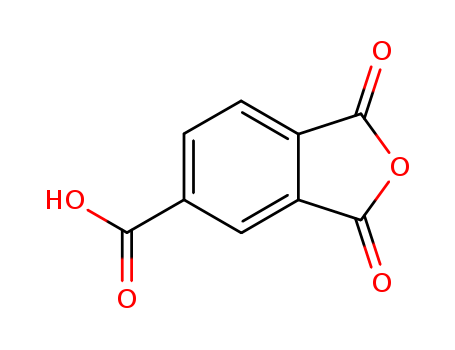- Product Details
Keywords
- 1,4-PHENYLENE DIISOTHIOCYANATE
- 4044-65-9
- C8H4N2S2
Quick Details
- ProName: 1,4-PHENYLENE DIISOTHIOCYANATE
- CasNo: 4044-65-9
- Molecular Formula: C8H4N2S2
- Appearance: White to yellow solid
- Application: Pharmaceutical Intermediates
- DeliveryTime: within 3-7 day
- PackAge: As required
- Port: shanghai or other
- ProductionCapacity: 5000 Kilogram/Month
- Purity: 98%
- Storage: store at 2-8℃
- Transportation: by sea or by air
- LimitNum: 10 Gram
Superiority
Changzhou Xuanming Chemical Co., Ltd. is dedicated to the technology development, manufacturing, import and export chemicals, which are specialized in pharmaceutical intermediates, pesticide intermediate, industry of fine chemicals and custom synthesis. Now, we enjoy good reputation among customers and take favorable market share in domestic and at abroad.
Changzhou Xuanming Chemical CO., LTD is located in Northern Jiangshu Industry Park, we have modern manufacture bases and some laboratories, which can supply the key intermediate for your projects, and short your synthesis scheme and supply you a reference compound for bioassay or a high purity analytical standard. We have been abided by “treat technology as first, quality as basis, customers as God, and be honest and sincere”. It is our final aim to provide environmental and high technological products and meet customers’ requirements according to keep effors on developing new chemical fields.
Changzhou Xuanming Chemical CO., LTD promises to help you with heart and soul.


Details
| 1,4-PHENYLENE DIISOTHIOCYANATE Basic information |
| Product Name: | 1,4-PHENYLENE DIISOTHIOCYANATE |
| Synonyms: | 1,4-diisothiocyanato-benzen;1,4-diisothiocyanatobenzene[qr];1,4-phenylenedi-isothiocyanicaci;Phenylene-1,4-diisothiocyanate, 1,4-Diisothiocyanatobenzene;PDITC;p-Phenylene diisothiocyanate 98%;16842(uspddn)[qr];ai3-28258[qr] |
| CAS: | 4044-65-9 |
| MF: | C8H4N2S2 |
| MW: | 192.26 |
| EINECS: | 223-741-3 |
| Product Categories: | JONIT;reagent |
| Mol File: | 4044-65-9.mol |
| 1,4-PHENYLENE DIISOTHIOCYANATE Chemical Properties |
| Melting point | 129-131 °C(lit.) |
| density | 1.3675 (rough estimate) |
| refractive index | 1.6000 (estimate) |
| storage temp. | −20°C |
| solubility | chloroform: clear |
| form | powder |
| color | white |
| Water Solubility | Hydrolyzes in water. |
| Sensitive | Moisture Sensitive |
| Merck | 14,1308 |
| BRN | 2414340 |
| InChIKey | OMWQUXGVXQELIX-UHFFFAOYSA-N |
| CAS DataBase Reference | 4044-65-9(CAS DataBase Reference) |
| Safety Information |
| Hazard Codes | Xn,Xi |
| Risk Statements | 22-36/37/38-42 |
| Safety Statements | 22-26-36/37 |
| RIDADR | UN 2811 6.1/PG 3 |
| WGK Germany | 3 |
| RTECS | NX9150000 |
| F | 10-21 |
| Hazard Note | Irritant |
| TSCA | Yes |
| HazardClass | 6.1 |
| PackingGroup | II |
| HS Code | 29291090 |
| 1,4-PHENYLENE DIISOTHIOCYANATE Usage And Synthesis |
| Chemical Properties | off-white to yellow to beige-grey crystalline |
| Chemical Properties | Those engaged in the manufacture, formulation and application of this anthelmintic compound. Incompatibilities: In general, keep away from strong oxidizers, moisture, strong acids, strong bases. This is a thiocyanate compound. Violent reactions may occur upon contact with chlorates (potassium chlorate, sodium chlorate), nitrates, nitric acid; organic peroxides. |
| Uses | Reagent for solid-phase sequencing. |
| Uses | anthelmintic |
| General Description | Odorless colorless crystals. Melting point 132°C. |
| Reactivity Profile | 1,4-PHENYLENE DIISOTHIOCYANATE reacts readily with amines [Noller]. These reactions may generate significant amounts of heat . Emits very toxic fumes of nitrogen oxides and sulfur oxides when heated to decomposition [EPA, 1998]. |
| Health Hazard | 1,4-PHENYLENE DIISOTHIOCYANATE is highly toxic if ingested. It is a central nervous system and gastrointestinal toxin in humans. |
| Fire Hazard | When heated to decomposition, 1,4-PHENYLENE DIISOTHIOCYANATE emits very toxic fumes of nitrogen oxides and sulfur oxides. |
| Safety Profile | Poison by ingestion and intraperitoneal routes. Human systemic effects by ingestion: hallucinations, nausea. When heated to decomposition it emits very toxic fumes of NOx,CN,and SOx.See also THIOCYANATES |
| Potential Exposure | Those engaged in the manufacture, formulation and application of this anthelmintic compound. Incompatibilities: In general, keep away from strong oxidizers, moisture, strong acids, strong bases. This is a thiocyanate compound. Violent reactions may occur upon contact with chlorates (potassium chlorate, sodium chlorate), nitrates, nitric acid; organic peroxides. |
| Shipping | UN2811 Toxic solids, organic, n.o.s., Hazard Class: 6.1; Labels: 6.1—Poisonous materials, Technical Name Required. |
| Purification Methods | Purify bitoscanate by recrystallisation from AcOH, pet ether (b 40-60o), Me2CO or aqueous Me2CO. [van der Kerk et al. Recl Trav Chim Pays-Bas 74 1262 1955, Leiber & Slutkin J Org Chem 27 2214 1962, Beilstein 13 IV 174.] |
| Incompatibilities | Incompatible with oxidizers (chlorates, nitrates, peroxides, permanganates, perchlorates, chlorine, bromine, fluorine, etc.); contact may cause fires or explosions. Keep away from alkaline materials, strong bases, strong acids, oxoacids, epoxides. |










